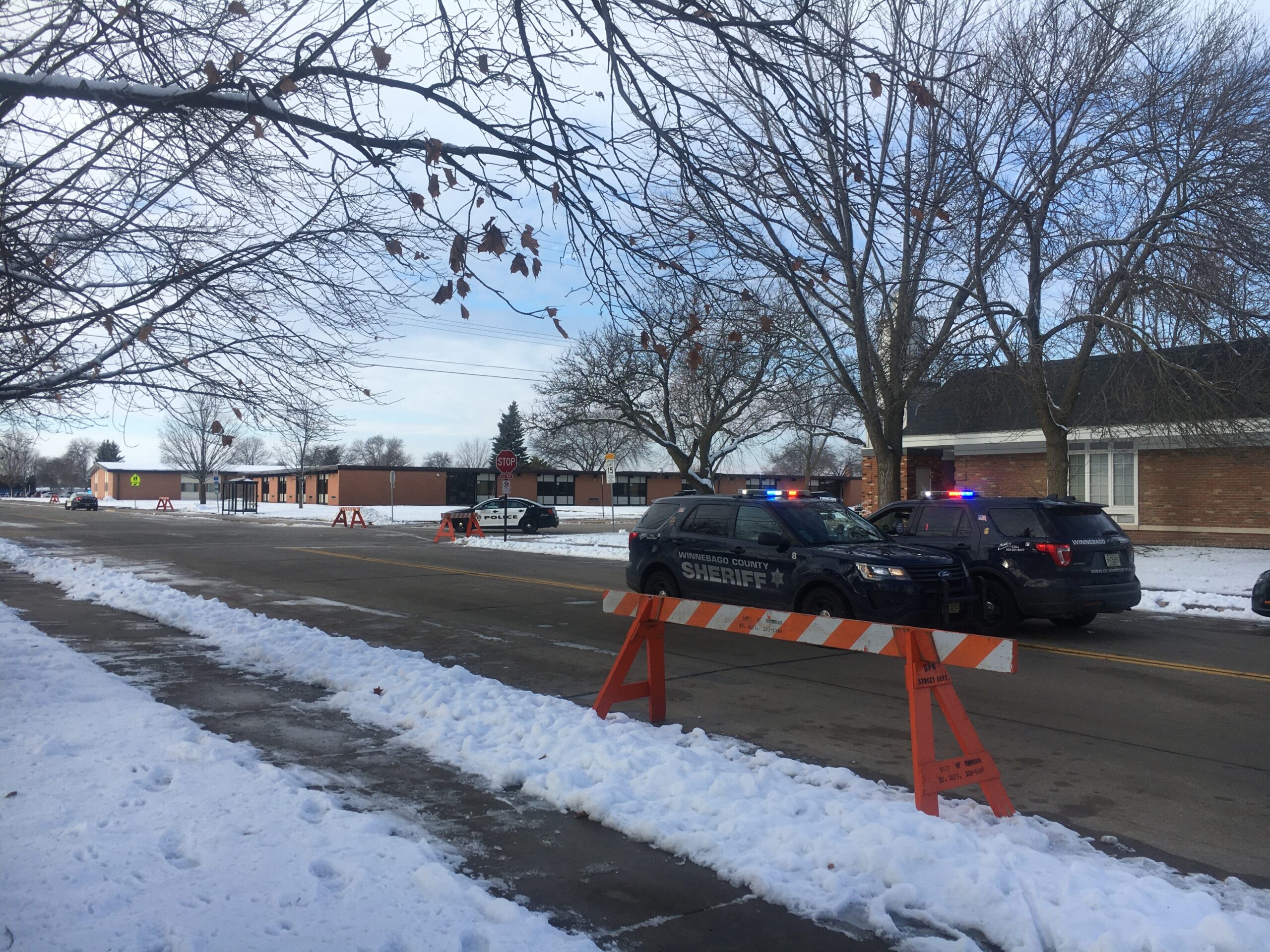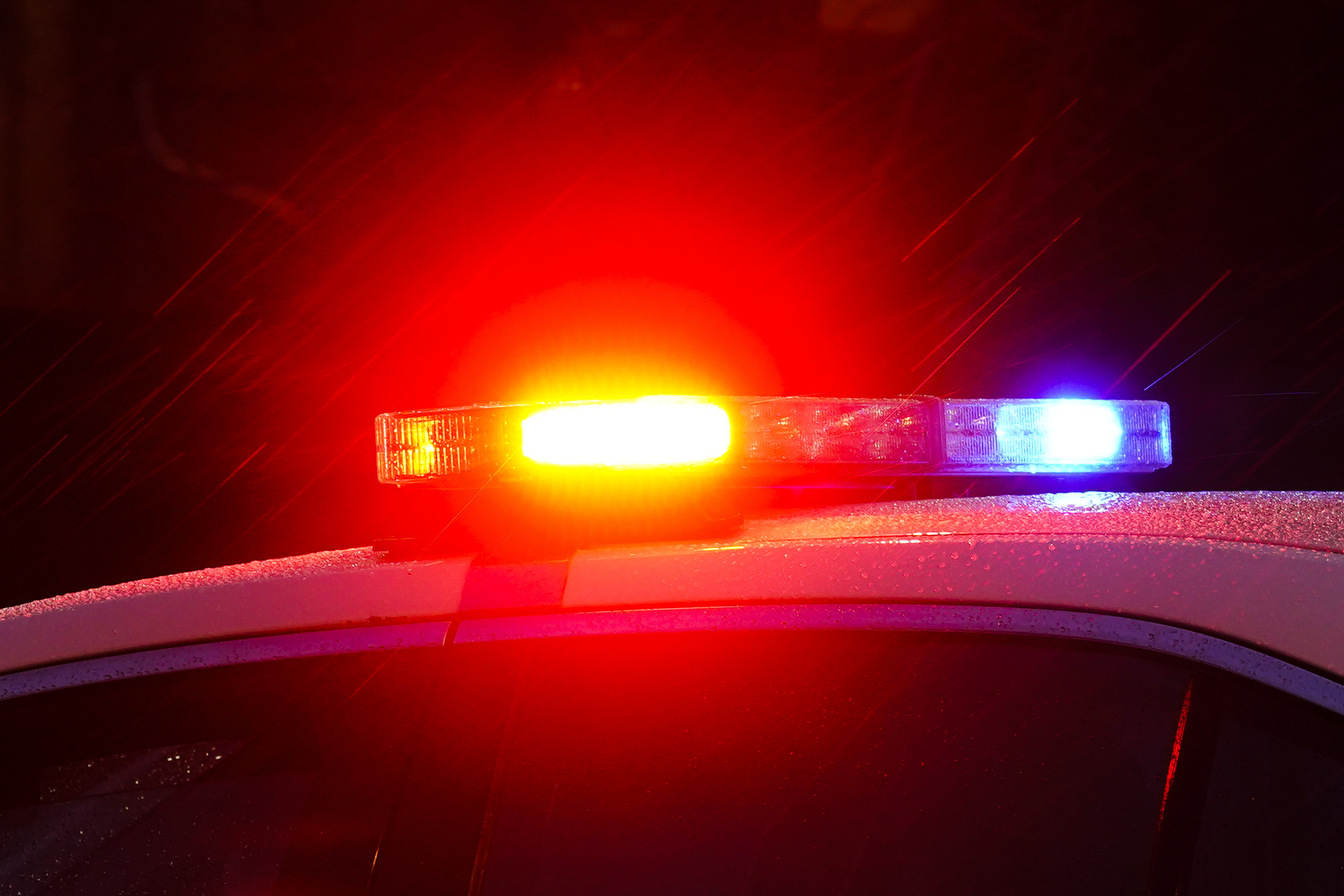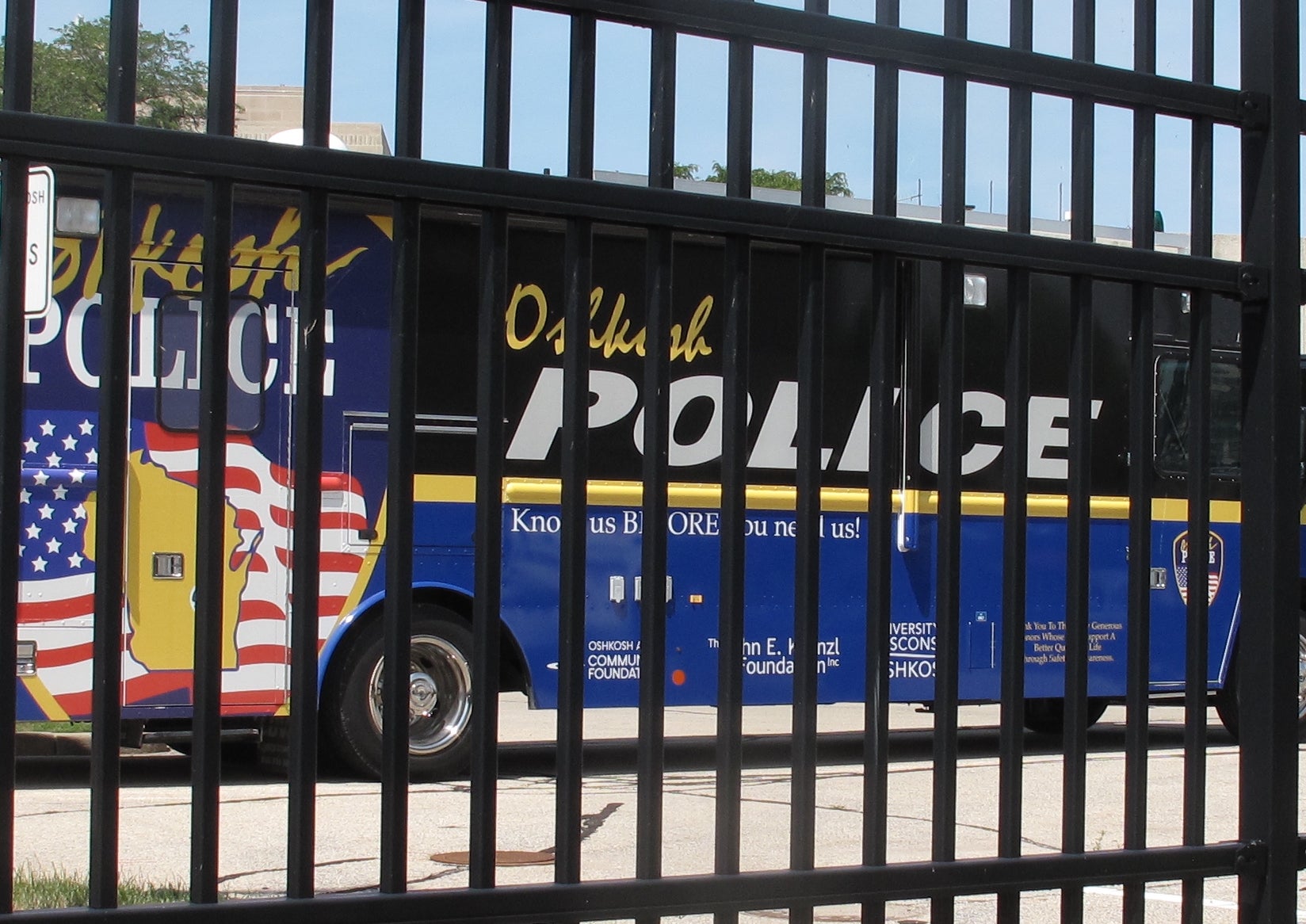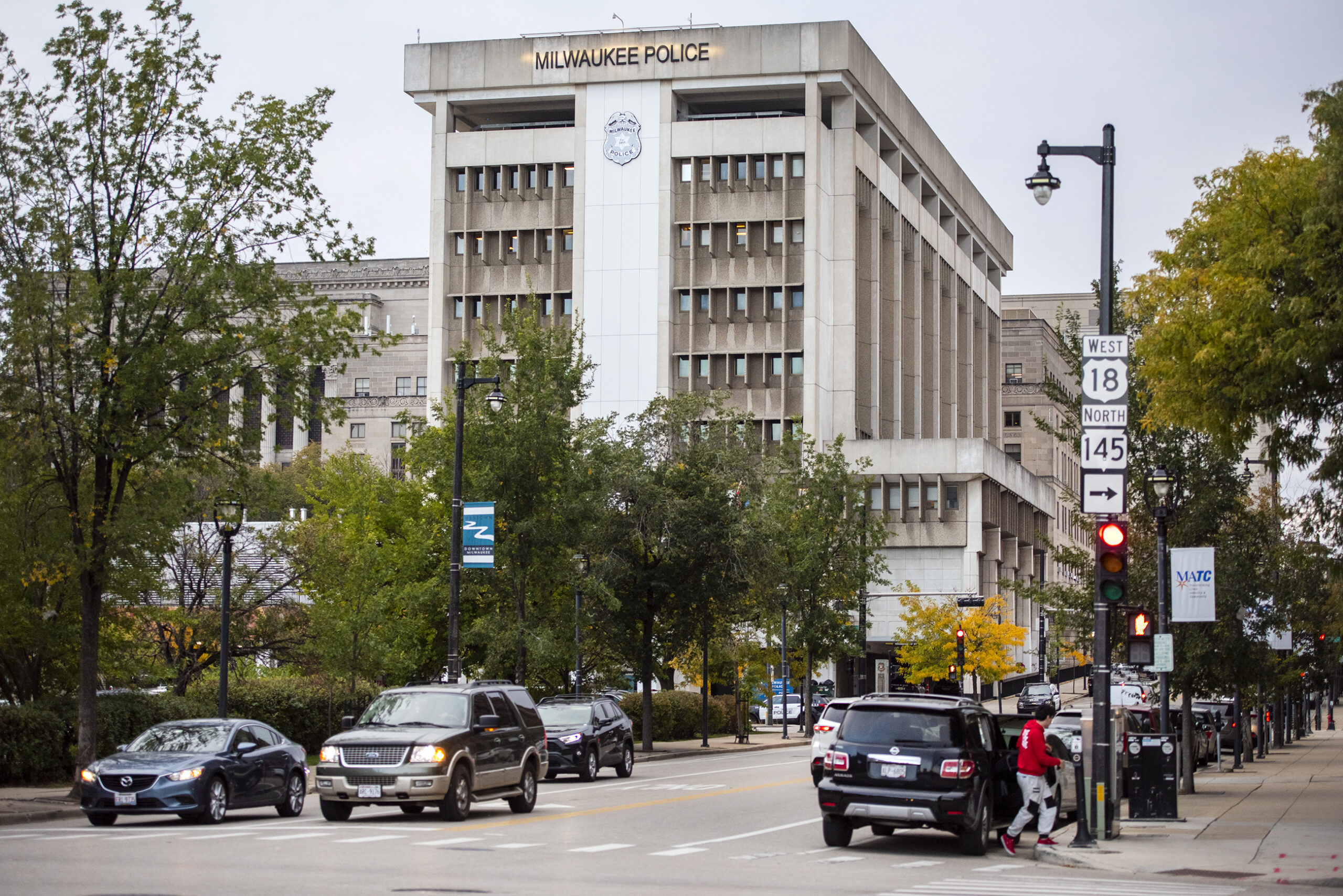A 16-year-old Wisconsin high school student who was shot after he stabbed a police officer could face attempted homicide charges, but authorities are asking media outlets to keep his name secret out of fear of sparking copycat incidents.
Oshkosh West High School resource officer Michael Wissink shot the student Tuesday after the teen allegedly stabbed him in his office. It’s unclear what led up to the altercation. Wissink, a 21-year Oshkosh Police Department veteran, survived his wounds. Nobody else was injured.
Oshkosh Northwestern Media reported Thursday that the suspect is being held in the Winnebago County Jail on suspicion of attempted first-degree intentional homicide. Wisconsin law requires that anyone 10 or older accused of committing or attempting to commit certain serious crimes such as homicide be charged as an adult.
Stay informed on the latest news
Sign up for WPR’s email newsletter.
Winnebago County Sheriff John Matz has not released the boy’s name and has asked media outlets not to identify him to reduce the so-called “contagion effect.” Researchers at Arizona State University have concluded that mass and school shootings tend to occur in clusters and can be socially contagious, especially during the two weeks immediately following the initial event. Media coverage can plant seeds of violence in people at risk of committing such acts, the researchers contend.
The Oshkosh West incident wasn’t a mass shooting so it’s unclear whether the contagion effect applies in this scenario.
Matz said he’d release the boy’s name if reporters ask for it but he wants to avoid giving the student his “five minutes of fame” and encouraging copycats. He said the media should focus on the victims, people who worked to save them and what becomes of the perpetrator, adding that the Oshkosh West student could end up spending many years in prison.
“It’s not real romantic for someone committing a crime,” he said.
Daniel Reidenberg, managing director of the National Council for Suicide Prevention, said the fewer details released about the suspect’s background and motives the less likely it will be that another child relates to him.
Kelly McBride, vice president of the Poynter Institute journalism school, countered that publishing a suspect’s name creates opportunities for people who know them to report information that could help investigators or identify red flags that were missed and prevent future incidents. She said the Oshkosh West incident doesn’t fit the profile of an incident that would “inspire contagion.”
“Contagion is really about feeding the idea that you as an individual are creating a legacy and solving a social problem and teaching people a lesson,” McBridge said.
The Associated Press typically does not identify suspects until prosecutors formally charge them.
The Oshkosh West incident came a day after a police officer shot a 17-year-old Waukesha South High School student who pointed what turned out to be a pellet gun at another student’s head in a classroom. Police said the student turned the gun toward responding officers, forcing Sgt. Brady Esser to open fire. The student with the pellet gun survived his wounds. He has yet to be formally charged.
© Copyright 2024 by The Associated Press. All rights reserved. This material may not be published, broadcast, rewritten or redistributed.






